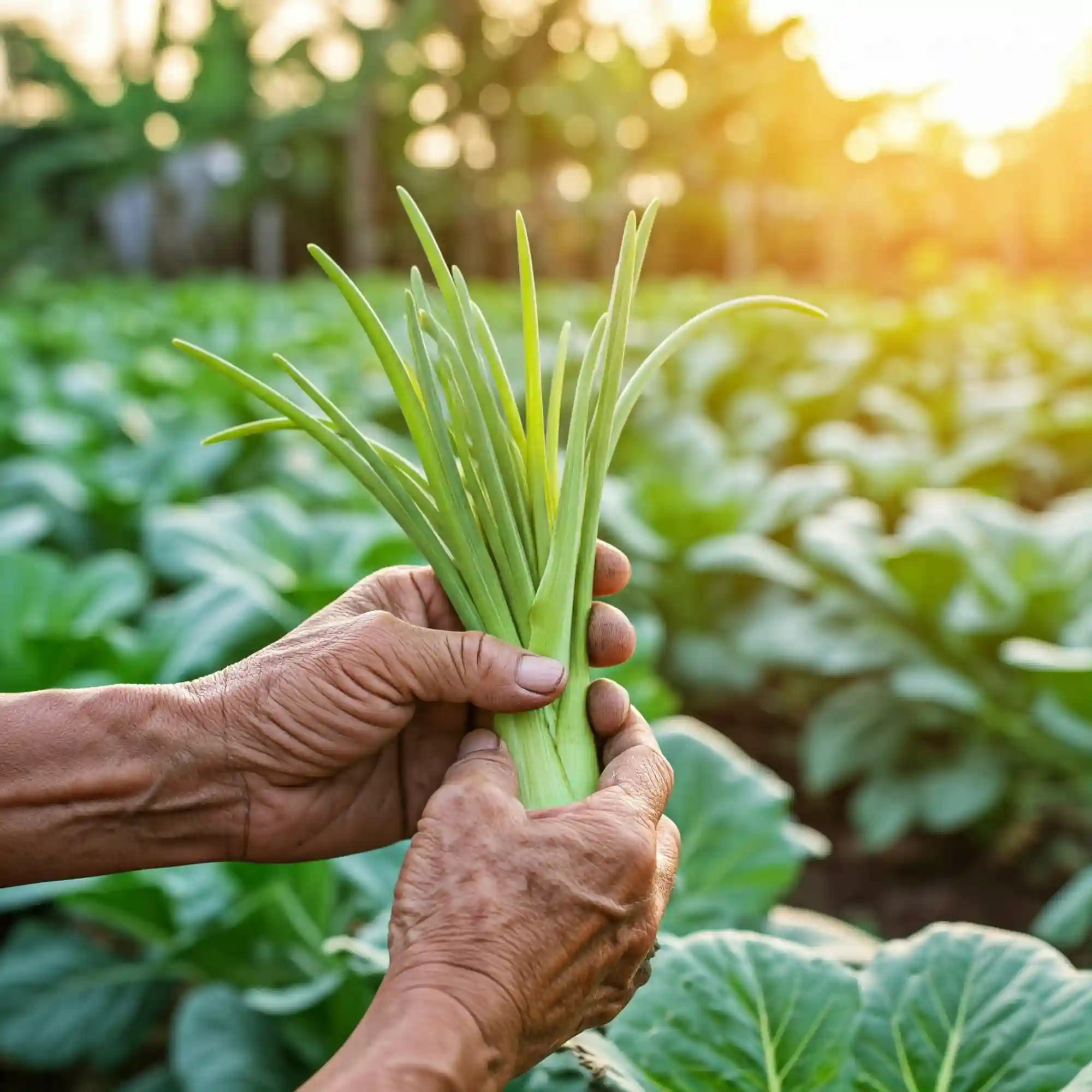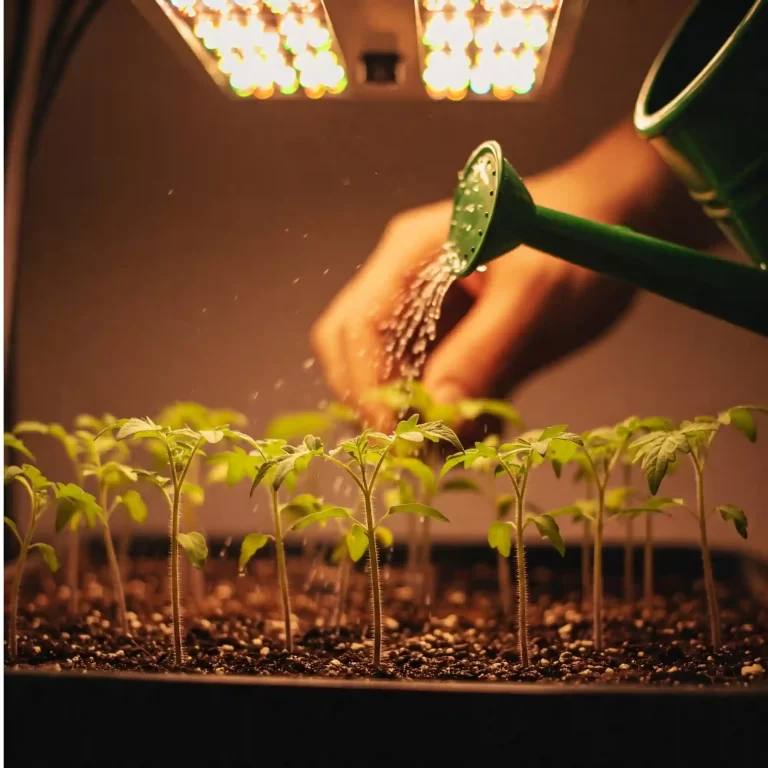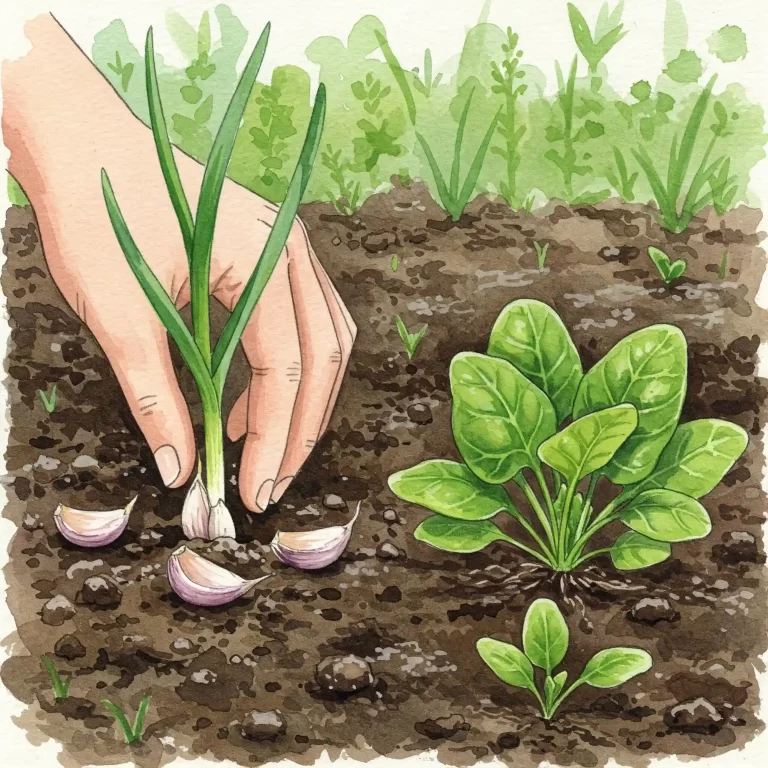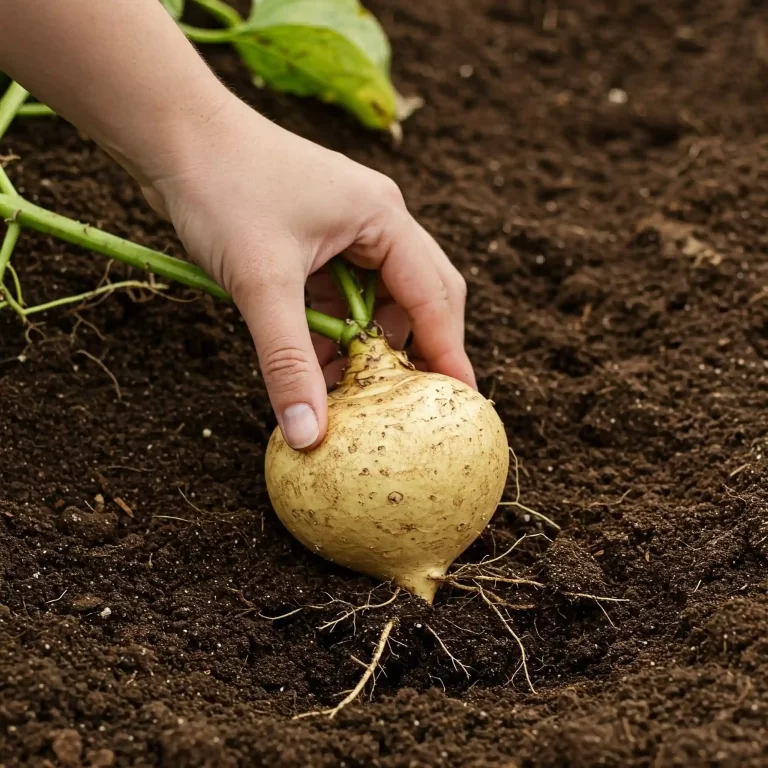Are you tired of the same old salad greens? Do you crave something with a bit more zing, something that adds a unique texture and flavor to your dishes? I know I was. That’s when I discovered Tat Soi. It’s a fantastic Asian green, packed with nutrients and incredibly easy to grow, even if you’re a beginner gardener. I remember feeling frustrated trying to find interesting and easy-to-grow greens. Everything seemed bland or required a lot of fuss. But Tat Soi changed that for me. It’s a game-changer, and I’m excited to share my knowledge with you. This comprehensive guide will walk you through seven simple steps on how to grow tat soi, from seed to harvest, ensuring you a thriving crop. Whether you have a spacious garden or just a small balcony, you can enjoy the fresh, slightly tangy taste of Tat Soi. So, let’s get our hands dirty and start growing!
Choosing the Right Tat Soi Variety
When you’re starting any gardening project, especially when learning how to grow tat soi vegetable, the first step is always crucial: choosing the right variety. I’ve learned from experience that selecting the right seeds can make all the difference between a bountiful harvest and a disappointing outcome. With Tat Soi, while the differences between varieties aren’t drastic, there are still some key factors to consider. You should think of it like choosing the right tool for the job – certain varieties will perform better in specific conditions.
Think of Tat Soi as a close relative to other Brassicas you might be familiar with, like bok choy or mustard greens. This family connection means they share some traits, but Tat Soi has its own unique characteristics. It forms a beautiful rosette of dark green, spoon-shaped leaves, giving it the nickname “Rosette Bok Choy.” I find this rosette shape not only visually appealing in the garden but also makes it easy to harvest.
When I first started growing Tat Soi, I didn’t pay much attention to the specific varieties. I just grabbed whatever seed packet I could find. While I still had some success, I quickly realized that selecting a suitable variety could significantly impact my yield and the overall health of my plants. Here are some key considerations to keep in mind when choosing your Tat Soi seeds:
- Bolt Resistance: Bolting, or premature flowering, is a common issue with leafy greens, especially in warmer climates. When a plant bolts, it focuses its energy on producing seeds rather than leaves, which can make the leaves bitter. I’ve had my share of bolting Tat Soi in the past, and it’s frustrating to see your crop go to seed before you’ve had a chance to enjoy it. Look for varieties specifically labeled as “bolt-resistant.” These varieties have been bred to withstand warmer temperatures and are less likely to bolt prematurely. This is especially important if you live in a region with hot summers or if you plan to grow Tat Soi during the shoulder seasons when temperatures can fluctuate.
- Maturity Time: Tat Soi is known for its quick growth, but different varieties can have slightly different maturity times. Some might be ready for harvest in as little as 30 days, while others might take a bit longer. If you’re eager to start enjoying your Tat Soi, look for varieties with a shorter maturity time. This is also useful if you’re planning multiple sowings throughout the growing season. I’ve found that having a quick-maturing variety allows me to get multiple harvests from the same space.
- Seed Source: The source of your seeds is crucial. I always recommend purchasing seeds from reputable seed suppliers. These suppliers are more likely to offer high-quality seeds that are true to type, meaning they will grow into the plants you expect. They also often provide helpful information about growing conditions and specific variety characteristics. I’ve learned the hard way that cheap, low-quality seeds can lead to poor germination rates and weak, disease-prone plants.
- Organic vs. Conventional: If you’re committed to organic gardening, make sure to choose certified organic seeds. These seeds are grown without the use of synthetic pesticides and fertilizers. I personally prefer organic seeds whenever possible, as it aligns with my commitment to sustainable gardening practices.
Here are some popular Tat Soi varieties you might encounter:
- ‘Joi Choi’: While technically a type of pak choi, it’s very similar to Tat Soi and often grouped with it. It’s known for its upright growth habit and mild flavor.
- ‘Rosette’: This variety is a classic Tat Soi, forming a compact rosette of dark green leaves. It’s known for its cold hardiness and is a good choice for fall and winter growing.
- ‘Black Summer’: This variety is known for its darker leaves and good heat tolerance. It’s a good choice for warmer climates.
Choosing the right Tat Soi variety is a small but important step in ensuring a successful harvest. By considering factors like bolt resistance, maturity time, seed source, and organic options, you can set yourself up for gardening success. I encourage you to experiment with different varieties to find what works best in your specific climate and garden.
Starting Tat Soi Seeds
Starting your Tat Soi from seed is a rewarding process. I find it gives me a deeper connection to my garden and allows me to control the growing process from the very beginning. You have two main options when it comes to starting Tat Soi seeds: you can start them indoors or directly sow them into your garden. Each method has its own advantages, and the best choice for you will depend on your climate, your available space, and your personal preferences.
Starting Seeds Indoors:
Starting seeds indoors is a great option if you live in a region with a short growing season or if you want to get a head start on your garden. I often start my Tat Soi indoors a few weeks before the last expected frost in my area. This gives the seedlings a chance to develop a strong root system before they are transplanted into the garden.
Here’s how I typically start Tat Soi seeds indoors:
- Choose Your Containers: You can use a variety of containers for starting seeds indoors, such as seed starting trays, peat pots, or even recycled yogurt cups. Just make sure the containers have drainage holes to prevent waterlogging. I prefer using seed starting trays with individual cells, as this makes it easier to transplant the seedlings later on.
- Use a Seed Starting Mix: It’s important to use a seed starting mix rather than regular potting soil. Seed starting mixes are finer in texture and provide better drainage, which is crucial for seed germination. I’ve found that using a high-quality seed starting mix significantly improves my germination rates.
- Sow the Seeds: Moisten the seed starting mix and then sow the Tat Soi seeds about ¼ inch deep. Gently press the soil over the seeds and water lightly. I usually sow a few extra seeds in each cell to account for any that might not germinate.
- Provide Warmth and Light: Tat Soi seeds need warmth and light to germinate. You can use a heat mat to keep the soil warm and place the seed trays under grow lights or in a sunny window. I’ve found that grow lights provide the most consistent light and result in stronger seedlings.
- Keep the Soil Moist: It’s important to keep the soil consistently moist but not soggy. You can use a spray bottle to mist the soil regularly. Once the seedlings emerge, make sure to provide adequate ventilation to prevent fungal diseases.
- Harden Off the Seedlings: Before transplanting the seedlings into the garden, you’ll need to harden them off. This process gradually acclimates the seedlings to outdoor conditions. Start by placing the seedlings outdoors in a sheltered location for a few hours each day, gradually increasing the amount of time they spend outdoors over the course of a week.
Direct Sowing Seeds:
Direct sowing is a simpler method that involves planting the seeds directly into the garden. This is a good option if you live in a region with a longer growing season or if you prefer a more hands-off approach.
Here’s how I typically direct sow Tat Soi seeds:
- Prepare the Soil: Make sure the soil is well-drained and amended with compost. Tat Soi prefers a soil pH between 6.0 and 7.5.
- Sow the Seeds: Sow the seeds ¼ inch deep and space them about 1 inch apart. Once the seedlings emerge, you can thin them to 6-8 inches apart.
- Water Regularly: Keep the soil consistently moist, especially during germination.
Which Method is Right for You?
- Start Indoors If:
- You live in a region with a short growing season.
- You want to get a head start on your garden.
- You want more control over the growing environment.
- Direct Sow If:
- You live in a region with a long growing season.
- You prefer a simpler approach.
- You have limited space indoors.
No matter which method you choose, starting Tat Soi from seed is a rewarding experience. It allows you to witness the entire life cycle of the plant and enjoy the fresh, delicious taste of homegrown Tat Soi.
Preparing the Growing Area
Now that you’ve chosen your Tat Soi variety and started your seeds, it’s time to prepare the growing area. This is a crucial step in ensuring your Tat Soi thrives. I’ve learned that Tat Soi, like most leafy greens, has specific preferences when it comes to its growing environment. Getting this right from the start will save you a lot of trouble down the line.
Sunlight:
Tat Soi thrives in a location that receives at least 6 hours of sunlight per day. I’ve found that morning sun is particularly beneficial, as it helps to dry the leaves and prevent fungal diseases. If you live in a particularly hot climate, providing some afternoon shade can help to prevent bolting.
Soil:
The soil is the foundation of your Tat Soi garden. Tat Soi prefers well-drained soil that is rich in organic matter. I always amend my soil with compost before planting, as this helps to improve drainage, water retention, and nutrient availability.
Here are some key characteristics of ideal Tat Soi soil:
- Well-drained: Tat Soi doesn’t like to sit in waterlogged soil. This can lead to root rot and other problems.
- Rich in organic matter: Organic matter, such as compost, helps to improve soil structure and provide essential nutrients.
- Slightly acidic to neutral pH: Tat Soi prefers a soil pH between 6.0 and 7.5.
Preparing the Soil:
Here’s how I typically prepare the soil for my Tat Soi plants:
- Clear the Area: Remove any weeds, rocks, or debris from the growing area.
- Amend the Soil: Spread a 2-3 inch layer of compost over the soil and work it in with a garden fork or tiller.
- Test the pH: If you’re unsure about your soil pH, you can test it using a home test kit or by sending a sample to a local lab.
- Adjust the pH if Necessary: If your soil pH is too acidic, you can add lime to raise it. If it’s too alkaline, you can add sulfur to lower it.
Growing in Containers:
If you’re growing Tat Soi in containers, you’ll need to choose a container that is at least 6 inches deep. Make sure the container has drainage holes to prevent waterlogging. I recommend using a high-quality potting mix that is designed for containers.
Additional Tips:
- Location: Choose a location that is protected from strong winds.
- Crop Rotation: If you’re growing Tat Soi in the garden, it’s a good idea to rotate your crops each year. This helps to prevent the buildup of soilborne diseases.
- Weeding: Keep the growing area free of weeds, as they can compete with your Tat Soi plants for water and nutrients.
By taking the time to prepare the growing area properly, you can create an ideal environment for your Tat Soi plants to thrive. This will set you up for a bountiful harvest of delicious, nutritious greens.
Planting Tat Soi Seedlings or Seeds
Now that your growing area is prepped and ready, it’s time to get your Tat Soi into the ground! Whether you started your seeds indoors or are direct sowing, this stage is all about giving your plants the best possible start. I’ve found that proper planting is key to vigorous growth and a successful harvest.
Transplanting Seedlings:
If you started your Tat Soi seeds indoors, you’ll need to transplant the seedlings into the garden once they have developed a few sets of true leaves. Here’s my method for transplanting:
- Harden Off Seedlings: Before transplanting, it’s crucial to harden off your seedlings. This process gradually acclimates them to outdoor conditions, preventing shock. I usually start by placing the seedlings in a sheltered spot outdoors for a few hours each day, gradually increasing their exposure to sunlight and wind over a week.
- Prepare Planting Holes: Dig holes that are slightly larger than the root balls of your seedlings. Space the holes 6-8 inches apart. This spacing gives the Tat Soi plants enough room to grow and prevents overcrowding.
- Carefully Remove Seedlings: Gently remove the seedlings from their containers, being careful not to damage the roots. I sometimes use a small trowel or spoon to help loosen the soil around the roots.
- Plant Seedlings: Place the seedlings in the prepared holes and gently firm the soil around them. Make sure the top of the root ball is level with the surrounding soil.
- Water Thoroughly: After transplanting, water the seedlings thoroughly to help them settle into their new home.
Direct Sowing:
If you’re direct sowing your Tat Soi seeds, you can plant them directly into the garden once the danger of frost has passed. Here’s how I direct sow:
- Prepare Seedbed: Make sure the soil is loose and free of any large clumps.
- Sow Seeds: Sow the seeds ¼ inch deep and space them about 1 inch apart. Once the seedlings emerge, you’ll need to thin them to 6-8 inches apart.
- Water Gently: Water the seedbed gently to avoid disturbing the seeds.
Additional Planting Tips:
- Timing: The best time to plant Tat Soi is in the spring or fall. Tat Soi prefers cooler temperatures and can tolerate light frost.
- Succession Planting: For a continuous harvest, I recommend succession planting. This involves planting a new batch of seeds every few weeks.
- Companion Planting: Tat Soi is a good companion plant for other vegetables like onions, carrots, and beets.
By following these planting tips, you can ensure your Tat Soi gets off to a strong start and provides you with a bountiful harvest.
Caring for Your Tat Soi Plants
Once your Tat Soi is planted, the real work begins – caring for your plants to ensure a healthy and productive harvest. I’ve found that Tat Soi is relatively low-maintenance, but there are a few key things to keep in mind.
Watering:
Tat Soi needs consistent moisture to thrive. I usually water my plants deeply whenever the top inch of soil feels dry to the touch. It’s important to avoid overwatering, as this can lead to root rot. I also try to water in the morning, so the leaves have time to dry before nightfall, which helps to prevent fungal diseases.
Fertilizing:
While Tat Soi doesn’t require heavy fertilization, a little boost can help to promote healthy growth. I usually fertilize my plants with a balanced organic fertilizer every few weeks. You can also amend the soil with compost or other organic matter before planting.
Weeding:
Weeds can compete with your Tat Soi plants for water and nutrients, so it’s important to keep the growing area free of weeds. I usually hand-weed my Tat Soi bed regularly.
Pest and Disease Control:
Tat Soi is relatively pest and disease-free, but there are a few things to watch out for. Aphids and slugs can sometimes be a problem. You can control aphids with insecticidal soap or by handpicking them off the plants. Slugs can be controlled with beer traps or by handpicking them at night.
Additional Care Tips:
- Thinning: If you direct sowed your Tat Soi seeds, you’ll need to thin the seedlings once they are a few inches tall. This will give the plants enough room to grow.
- Mulching: Applying a layer of mulch around your Tat Soi plants can help to conserve moisture, suppress weeds, and keep the soil cool.
- Crop Rotation: If you’re growing Tat Soi in the garden, it’s a good idea to rotate your crops each year. This helps to prevent the buildup of soilborne diseases.
By following these care tips, you can ensure your Tat Soi plants stay healthy and productive throughout the growing season.
Harvesting Tat Soi
The time you’ve been waiting for! Harvesting your Tat Soi is the most rewarding part of the growing process. I always feel a sense of accomplishment when I bring in a fresh harvest from my garden, and Tat Soi is no exception. It’s a fast-growing green, so you won’t have to wait long to start enjoying its delicious leaves.
When to Harvest:
You can begin harvesting Tat Soi when the outer leaves are about 4 inches long. I usually start harvesting about 30-45 days after planting, depending on the variety and growing conditions. The leaves are most tender and flavorful when they are young.
How to Harvest:
There are two main ways to harvest Tat Soi:
- Cut-and-Come-Again: This is my preferred method, as it allows for continuous harvest throughout the growing season. Simply cut the outer leaves off at the base of the plant, leaving the inner leaves to continue growing.
- Whole Plant Harvest: If you need a larger harvest all at once, you can harvest the entire plant by cutting it off at the base.
Tips for Harvesting:
- Harvest in the Morning: I find that the leaves are crisper and more flavorful when harvested in the morning, after the dew has dried.
- Use a Sharp Knife: A sharp knife will make clean cuts and prevent damage to the plant.
- Handle with Care: Tat Soi leaves are delicate, so handle them with care to avoid bruising.
Storing Tat Soi:
Tat Soi is best used fresh, but you can store it in the refrigerator for a few days. Here’s how I store my Tat Soi:
- Wash and Dry: Wash the leaves thoroughly and dry them with a salad spinner or paper towels.
- Store in a Bag: Place the leaves in a plastic bag or container lined with a paper towel.
- Refrigerate: Store the bag in the refrigerator for up to a few days.
By following these harvesting and storage tips, you can enjoy fresh, delicious Tat Soi from your garden throughout the growing season.
Troubleshooting Common Tat Soi Problems
Even with the best care, you might encounter some challenges while growing Tat Soi. I’ve certainly had my share of gardening mishaps, and it’s all part of the learning process. Here are some common problems you might encounter and how to address them:
Bolting:
Bolting, or premature flowering, is a common issue with Tat Soi, especially in hot weather. When a plant bolts, it focuses its energy on producing seeds rather than leaves, which can make the leaves bitter.
- Cause: Hot weather, stress, or inconsistent watering.
- Solution: Choose bolt-resistant varieties, provide shade during the hottest part of the day, and ensure consistent watering.
Pests:
Tat Soi is relatively pest-free, but aphids and slugs can sometimes be a problem.
- Aphids: These small insects can suck the sap from Tat Soi leaves, causing them to wilt and yellow.
- Solution: Control aphids with insecticidal soap, neem oil, or by handpicking them off the plants.
- Slugs: These slimy creatures can munch on Tat Soi leaves, leaving unsightly holes.
- Solution: Control slugs with beer traps, diatomaceous earth, or by handpicking them at night.
Diseases:
Tat Soi is generally disease-resistant, but fungal diseases can sometimes occur, especially in humid conditions.
- Damping Off: This fungal disease can affect seedlings, causing them to rot at the base.
- Solution: Prevent damping off by using a sterile seed starting mix, providing good ventilation, and avoiding overwatering.
- Downy Mildew: This fungal disease can cause white or gray patches on Tat Soi leaves.
- Solution: Prevent downy mildew by providing good air circulation and avoiding overhead watering. Treat infected plants with a fungicide if necessary.
Other Problems:
- Yellowing Leaves: This can be a sign of nutrient deficiency, overwatering, or underwatering.
- Solution: Adjust watering as needed and fertilize with a balanced organic fertilizer.
- Stunted Growth: This can be caused by poor soil, lack of sunlight, or pest or disease problems.
- Solution: Ensure your Tat Soi is planted in well-drained soil that is rich in organic matter. Provide at least 6 hours of sunlight per day and control any pests or diseases.
By being aware of these potential problems and knowing how to address them, you can keep your Tat Soi plants healthy and productive.
Frequently Asked Questions (FAQs)
I’ve compiled a list of frequently asked questions about growing Tat Soi to further assist you. These are questions I often get from fellow gardeners, and I hope they provide you with some additional helpful information.
General Tat Soi Growing Questions:
- How to grow tat soi vegetable in containers indoors?
Growing Tat Soi in containers indoors is a great option for those with limited space or who want to extend their growing season. Choose a container that is at least 6 inches deep and has drainage holes. Use a well-draining potting mix and provide adequate light, either from a sunny windowsill or grow lights. - What is the best way to grow tat soi vegetable from seed?
The best way to grow Tat Soi from seed is to start them indoors 4-6 weeks before the last expected frost or direct sow them after the danger of frost has passed. - How to grow tat soi vegetable in a raised garden bed?
Growing Tat Soi in a raised garden bed is a great way to improve drainage and soil quality. Prepare the raised bed with well-drained soil amended with compost. Space plants 6-8 inches apart. - How to grow tat soi vegetable organically without pesticides?
To grow Tat Soi organically, use organic fertilizers and pest control methods like insecticidal soap, handpicking, or introducing beneficial insects. - How to grow tat soi vegetable in hot climates during summer?
In hot climates, choose bolt-resistant varieties, provide shade during the hottest part of the day, and ensure consistent watering to prevent bolting. - How to grow tat soi vegetable for continuous harvest throughout the season?
Harvest outer leaves regularly, leaving the inner leaves to continue growing, for a continuous harvest throughout the season.
Pest and Disease Questions:
- What are the common pests and diseases affecting tat soi vegetable and how to treat them?
Common pests include aphids and slugs. Diseases are less common but can include fungal issues. Treat with appropriate organic methods.
Other Common Questions:
- Is Tat Soi easy to grow?
Yes, Tat Soi is considered an easy-to-grow vegetable, making it a great choice for beginner gardeners. - How long does it take for Tat Soi to mature?
Tat Soi typically matures in 30-45 days, depending on the variety and growing conditions. - What does Tat Soi taste like?
Tat Soi has a mild, slightly tangy flavor that is similar to spinach or mustard greens. - How do you eat Tat Soi?
Tat Soi can be eaten raw in salads or cooked in stir-fries, soups, and other dishes.
I hope these FAQs have addressed any remaining questions you have about growing Tat Soi. If you have any other questions, feel free to leave a comment below!
Conclusion: Enjoying Your Homegrown Tat Soi
Growing Tat Soi is a rewarding experience that can provide you with fresh, delicious greens throughout the growing season. I’ve found that it’s a versatile vegetable that can be enjoyed in a variety of dishes, from salads to stir-fries.
Key Takeaways:
- Tat Soi is a fast-growing, easy-to-grow vegetable that is perfect for beginner gardeners.
- Choose bolt-resistant varieties if you live in a hot climate.
- Start seeds indoors or direct sow them into the garden.
- Provide consistent moisture and fertilize regularly.
- Harvest outer leaves for a continuous harvest.
I encourage you to give Tat Soi a try in your garden. It’s a great way to add some variety to your meals and enjoy the satisfaction of growing your own food.
I hope this guide has been helpful. If you have any other questions about growing Tat Soi, feel free to leave a comment below!




